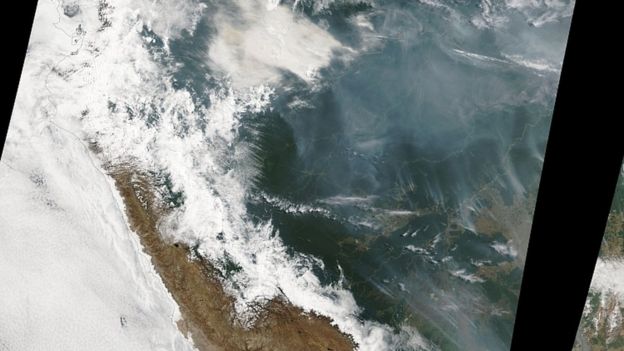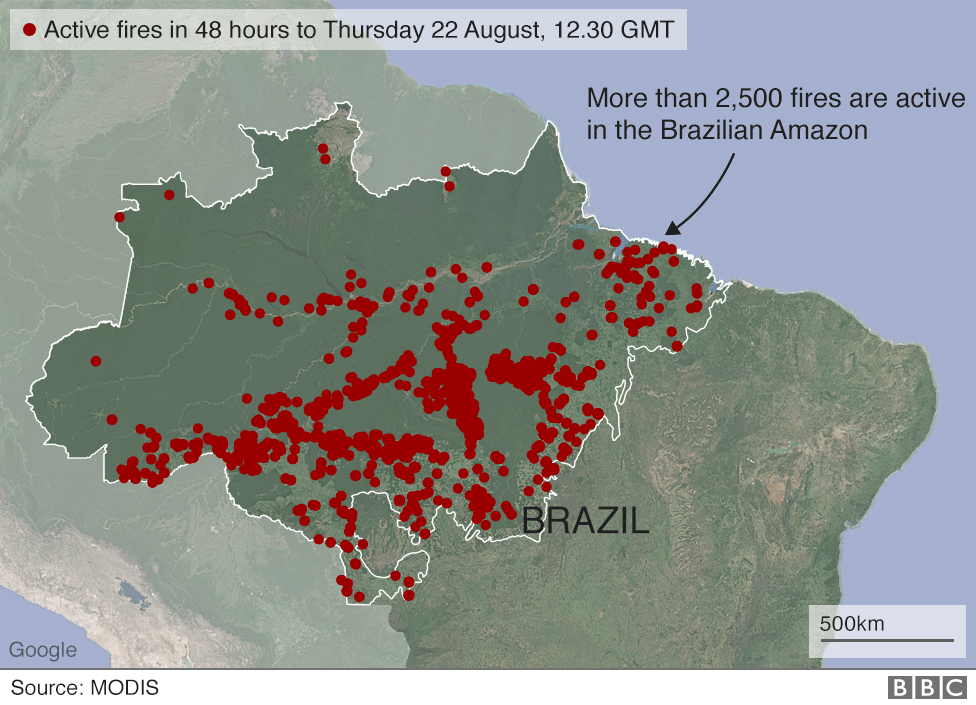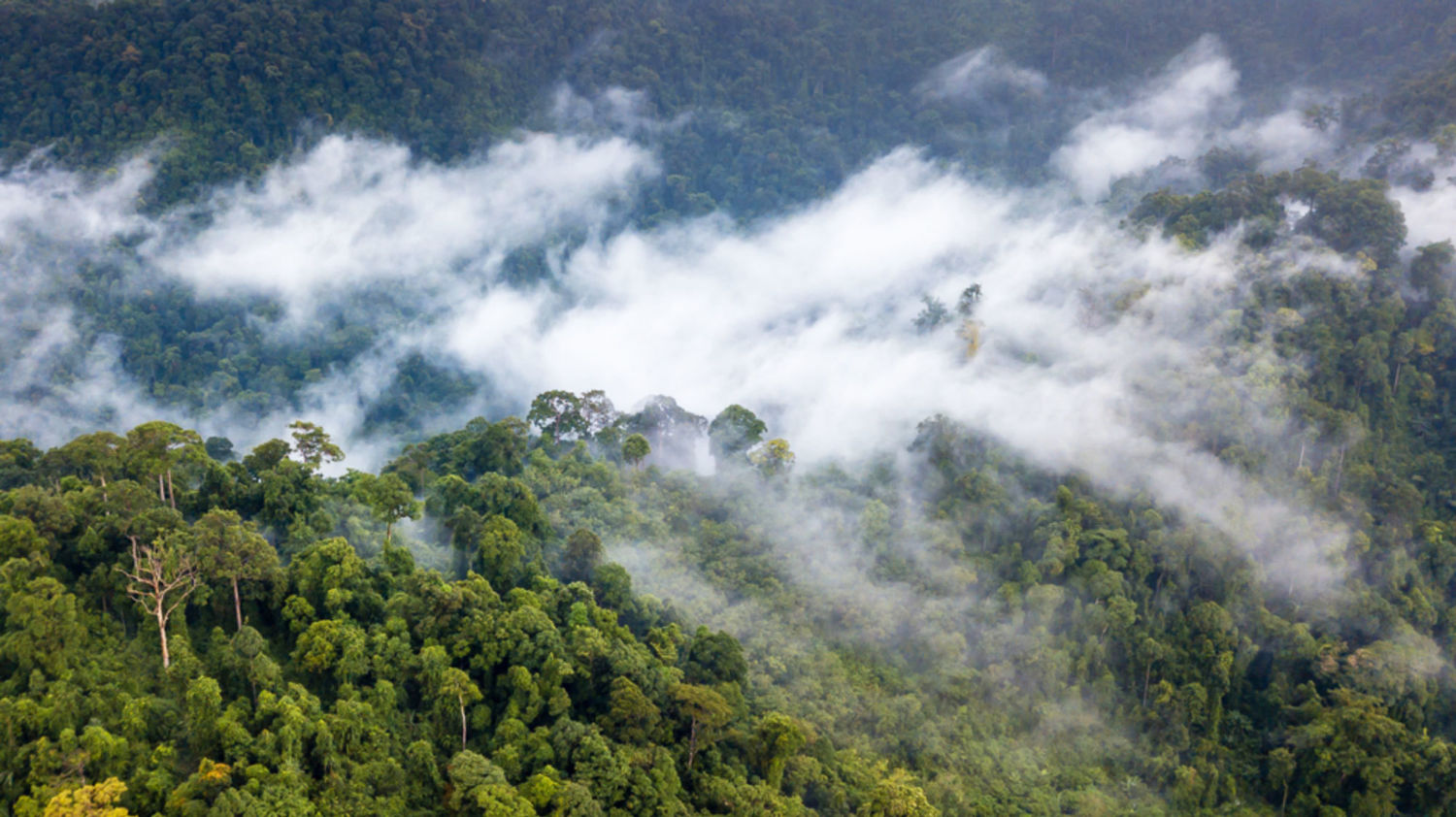One of the world's most prominent fisheries scientists talks to Unearthed about overfishing, whaling and climate change
Watch: "We are chasing the last of the big fish" – Fisheries scientist on overfishing, whaling and climate change - Unearthed
Following what goes on with oil and gas exploitation in and around Adrian, Michigan since 2013 - and how these events in our little city connect to the global environmental situation... - with the occasional sidetrack to other related environmental issues in Lenawee county, Michigan and how those relate to global issues.
Friday, August 23, 2019
US Subsidizes Fossil Fuels To The Tune Of $4.6, $27.4, Or $649 Billion Annually, Depending On Source | CleanTechnica
In 2022 in the USA, wind will get zero subsidies, solar will get very little, and fossil fuels will get $4.6 to $649 billion depending on accounting.

Graph courtesy of US Congressional Research Service
Continue reading at: US Subsidizes Fossil Fuels To The Tune Of $4.6, $27.4, Or $649 Billion Annually, Depending On Source | CleanTechnica

Graph courtesy of US Congressional Research Service
Continue reading at: US Subsidizes Fossil Fuels To The Tune Of $4.6, $27.4, Or $649 Billion Annually, Depending On Source | CleanTechnica
Sanders to unveil $16tn climate plan, far more aggressive than rivals' proposals | US news | The Guardian
Democratic presidential hopeful’s 10-year plan warns of devastating economic consequences if crisis is not addressed
Bernie Sanders has laid out an ambitious 10-year, $16.3tn national mobilization to avert climate catastrophe, warning that the US risks losing $34.5tn in economic productivity by the end of the century if it does not respond with the urgency the threat demands.
The Vermont senator has long spoken of the climate crisis as a existential danger to the US and the world, and he has previously endorsed a Green New Deal, which he put forward with the New York congresswoman Alexandria Ocasio-Cortez.

Bernie Sanders’ plan calls for complete decarbonization by 2050. Photograph: Mike Blake/Reuters
Sanders will formally unveil his proposal on Thursday during a campaign visit to Paradise, California, a town that was destroyed in 2018 by one of the deadliest wildfires in US history. After the tour, the senator will hold a climate change town hall in Chico, California.
Continue reading: Sanders to unveil $16tn climate plan, far more aggressive than rivals' proposals | US news | The Guardian
Bernie Sanders has laid out an ambitious 10-year, $16.3tn national mobilization to avert climate catastrophe, warning that the US risks losing $34.5tn in economic productivity by the end of the century if it does not respond with the urgency the threat demands.
The Vermont senator has long spoken of the climate crisis as a existential danger to the US and the world, and he has previously endorsed a Green New Deal, which he put forward with the New York congresswoman Alexandria Ocasio-Cortez.

Bernie Sanders’ plan calls for complete decarbonization by 2050. Photograph: Mike Blake/Reuters
Sanders will formally unveil his proposal on Thursday during a campaign visit to Paradise, California, a town that was destroyed in 2018 by one of the deadliest wildfires in US history. After the tour, the senator will hold a climate change town hall in Chico, California.
Continue reading: Sanders to unveil $16tn climate plan, far more aggressive than rivals' proposals | US news | The Guardian
Amazon fires an emergency, say Merkel and Macron
The French and German leaders say the record number of fires in Brazil's Amazon rainforest is an international crisis which must be discussed at this weekend's G7 summit.
German Chancellor Angela Merkel said the "acute emergency" belonged on the agenda, agreeing with French President Emmanuel Macron's earlier rallying cry.
"Our house is burning," he tweeted.
Environmental groups say the fires are linked to Brazilian President Jair Bolsonaro's policies, which he denies.
Mr Bolsonaro has also accused Mr Macron of meddling for "political gain". He said calls to discuss the fires at the G7 summit in Biarritz, France, which Brazil is not participating in, evoke "a misplaced colonialist mindset".

Smoke from fires burning in the Amazon can be seen from space. NASA
The largest rainforest in the world, the Amazon is a vital carbon store that slows down the pace of global warming.
It is also home to about three million species of plants and animals, and one million indigenous people.

Continue reading at: Amazon fires an emergency, say Merkel and Macron
German Chancellor Angela Merkel said the "acute emergency" belonged on the agenda, agreeing with French President Emmanuel Macron's earlier rallying cry.
"Our house is burning," he tweeted.
Environmental groups say the fires are linked to Brazilian President Jair Bolsonaro's policies, which he denies.
Mr Bolsonaro has also accused Mr Macron of meddling for "political gain". He said calls to discuss the fires at the G7 summit in Biarritz, France, which Brazil is not participating in, evoke "a misplaced colonialist mindset".

Smoke from fires burning in the Amazon can be seen from space. NASA
The largest rainforest in the world, the Amazon is a vital carbon store that slows down the pace of global warming.
It is also home to about three million species of plants and animals, and one million indigenous people.

Continue reading at: Amazon fires an emergency, say Merkel and Macron
Rivers in the Sky: How Deforestation Is Affecting Global Water Cycles
A growing body of evidence indicates that the continuing destruction of tropical forests is disrupting the movement of water in the atmosphere, causing major shifts in precipitation that could lead to drought in key agricultural areas in China, India, and the U.S. Midwest.
very tree in the forest is a fountain, sucking water out of the ground through its roots and releasing water vapor into the atmosphere through pores in its foliage. In their billions, they create giant rivers of water in the air – rivers that form clouds and create rainfall hundreds or even thousands of miles away.
But as we shave the planet of trees, we risk drying up these aerial rivers and the lands that depend on them for rain. A growing body of research suggests that this hitherto neglected impact of deforestation could in many continental interiors dwarf the impacts of global climate change. It could dry up the Nile, hobble the Asian monsoon, and desiccate fields from Argentina to the Midwestern United States.

Until recently, the nuggets of data delivering such warnings were fragmented and often relegated to minor scientific journals. But the growing concerns came to the fore in reports presented at two forest forums held by the United Nations and the Norwegian government in recent weeks.
In Norway, Michael Wolosin of the U.S. think tank Forest Climate Analytics and Nancy Harris of the World Resources Institute published a study that concluded that “tropical forest loss is having a larger impact on the climate than has been commonly understood.” They warned that large-scale deforestation in any of the three major tropical forest zones of the world – Africa’s Congo basin, southeast Asia, and especially the Amazon – could disrupt the water cycle sufficiently to “pose a substantial risk to agriculture in key breadbaskets halfway round the world in parts of the U.S., India, and China.”

Continue reading at: Rivers in the Sky: How Deforestation Is Affecting Global Water Cycles
very tree in the forest is a fountain, sucking water out of the ground through its roots and releasing water vapor into the atmosphere through pores in its foliage. In their billions, they create giant rivers of water in the air – rivers that form clouds and create rainfall hundreds or even thousands of miles away.
But as we shave the planet of trees, we risk drying up these aerial rivers and the lands that depend on them for rain. A growing body of research suggests that this hitherto neglected impact of deforestation could in many continental interiors dwarf the impacts of global climate change. It could dry up the Nile, hobble the Asian monsoon, and desiccate fields from Argentina to the Midwestern United States.

Moisture produced by the world's forests generates rainfall thousands of miles away. RICHARD WHITCOMBE / SHUTTERSTOCK
Until recently, the nuggets of data delivering such warnings were fragmented and often relegated to minor scientific journals. But the growing concerns came to the fore in reports presented at two forest forums held by the United Nations and the Norwegian government in recent weeks.
In Norway, Michael Wolosin of the U.S. think tank Forest Climate Analytics and Nancy Harris of the World Resources Institute published a study that concluded that “tropical forest loss is having a larger impact on the climate than has been commonly understood.” They warned that large-scale deforestation in any of the three major tropical forest zones of the world – Africa’s Congo basin, southeast Asia, and especially the Amazon – could disrupt the water cycle sufficiently to “pose a substantial risk to agriculture in key breadbaskets halfway round the world in parts of the U.S., India, and China.”

Trees pull water from the ground and release water vapor through their leaves, generating atmospheric rivers of moisture. WORLD RESOURCES INSTITUTE
Continue reading at: Rivers in the Sky: How Deforestation Is Affecting Global Water Cycles
Wednesday, August 21, 2019
The advisory list for self classification of hazardous substances
The Danish Environmental Protection Agency publishes an advisory list for self classification of chemical substances – with advisory classifications of more than 54,000 substances.
The advisory list for self classification of hazardous substances
The advisory list for self classification of hazardous substances
Saturday, August 17, 2019
Why The Green New Deal Cuts Consumer Energy Costs & Unemployment
The Green New Deal is a proposal to transition the United States entirely to clean, renewable, zero-emission energy in all energy sectors, to promote removal of carbon from the air through natural reforestation and land preservation, and to create jobs. By focusing on renewable energy that is both clean and zero-emission, the Green New Deal reduces, in one fell swoop, energy insecurity due to the fossil fuel and nuclear industries, 62,000 deaths and millions more illnesses annually from US energy-related air pollution, and the US’ contribution to global warming.

Critics claim, though, that the Green New Deal is unaffordable and uneconomical and will sink the US into more debt. Having led the research team that developed science-based plans to transition each of the 50 states to 100% wind, water, and solar (WWS) in all energy sectors (electricity, transportation, heating and cooling, and industry), we conclude the opposite is true: the benefits of clean energy systems greatly exceed the costs. 10 other independent research groups similarly find that 100% renewable energy systems are low cost without fossil fuels with carbon capture or nuclear power.

However, a 100% transition of all energy sectors by 2030, while technically and economically possible and desirable, may not occur that fast for social and political reasons. As such, we have consistently proposed a goal of 80% transition by 2030 and 100% no later than 2050 and hopefully earlier. The electricity sector, for example, can transition by 2035. If accomplished worldwide, this goal limits global warming to 1.5 degrees Celsius.
Continue reading: Why The Green New Deal Cuts Consumer Energy Costs & Unemployment

Critics claim, though, that the Green New Deal is unaffordable and uneconomical and will sink the US into more debt. Having led the research team that developed science-based plans to transition each of the 50 states to 100% wind, water, and solar (WWS) in all energy sectors (electricity, transportation, heating and cooling, and industry), we conclude the opposite is true: the benefits of clean energy systems greatly exceed the costs. 10 other independent research groups similarly find that 100% renewable energy systems are low cost without fossil fuels with carbon capture or nuclear power.

However, a 100% transition of all energy sectors by 2030, while technically and economically possible and desirable, may not occur that fast for social and political reasons. As such, we have consistently proposed a goal of 80% transition by 2030 and 100% no later than 2050 and hopefully earlier. The electricity sector, for example, can transition by 2035. If accomplished worldwide, this goal limits global warming to 1.5 degrees Celsius.
Continue reading: Why The Green New Deal Cuts Consumer Energy Costs & Unemployment
Subscribe to:
Posts (Atom)
